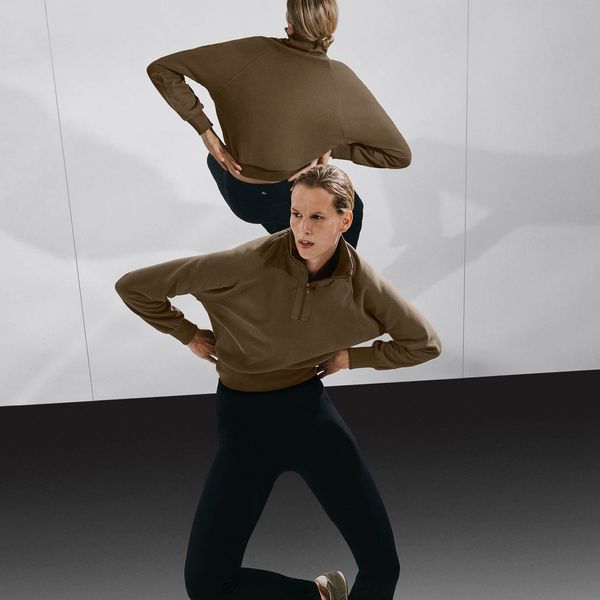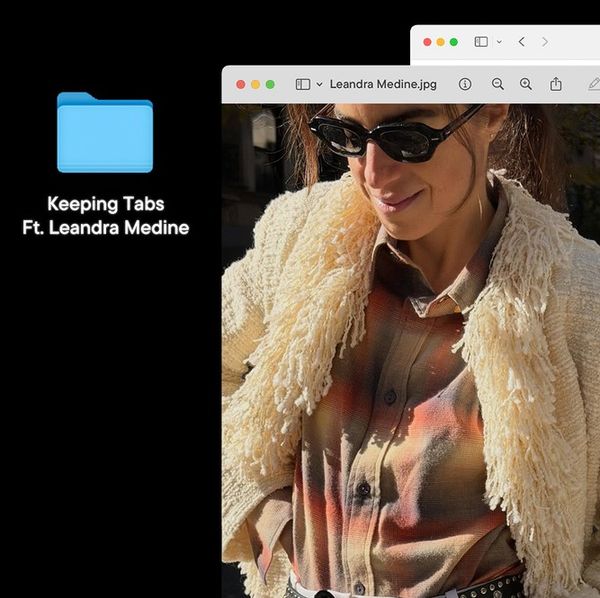Raul Lopez's Brave New World
The Luar designer opens up about his past (very New York), his present (stressing about tariffs), and his future (furniture collabs!).

Stroll west down Christopher Street in New York City’s West Village today, and you’ll pass a Michelin-starred Korean noodle restaurant on the right, a trendy French bistro serving glistening tartare de boeuf a little further down, then rows of regal, vine-wrapped brownstones. But when Raul Lopez was growing up, it was an entirely different scene. “They used to call it gay Times Square,” the Dominican-born, Brooklyn-raised Luar designer says, sipping on an iced oat-latte in his brand’s new studio in the Financial District. “Black and brown, Asian, white—everyone in their looks, everyone just hanging out, trying to find their tribes, trying to find a friend because they probably felt alone, or were homeless.”
As a young queer kid living in Brooklyn at the time, Lopez would buy clothes from Domsey’s—a 30,000 square foot warehouse selling used and vintage garments—and sneak them onto the train to change into before arriving on Christopher Street. “You couldn't leave your house dressed in a flamboyant look or anything ‘fashion’—you would get beat up,” he says. Christopher Street was one of the few safe havens for the LGBTQ+ community at the time, and Lopez describes it as a chaotic wonderland—pheremone-soaked limbs jostling and spilling onto sidewalks, thumping ballroom music from the club next door, steaming-hot dumplings served in paper plates from everyone’s go-to Chinese restaurant, Golden Wok. There was also a darker underbelly, with homelessness and sex work running rampant—a grittiness that’s since been replaced with coffee chains and boutiques selling Scandinavian clothing. But Lopez remembers what it used to be. It was on Christopher Street that a young Lopez met Shayne Oliver, which sparked the beginning of Lopez’s journey as a designer. The duo launched the streetwear brand Hood By Air in 2006, until Lopez left in 2010 to start Luar.“The majority of my collection is just going back in time for the kids these days who can't experience it, the gay boys who yearn for it, and bringing them a bit of that feeling,” he says.
With no formal fashion school training, Lopez created Luar instead as a portal to the world he innately understood—a space that championed POC, the outsiders, the queer kids, and the ones who didn’t quite fit in, without glossing over the ugliness and painful parts that accompanied it, either.
Take, for instance, his most recent F/W 2025 collection, which debuted during New York Fashion Week in February. Named “El Pato,” it served as a reclamation of a gay slur he heard growing up and featured his signature exaggerated silhouettes and sculptural shapes, with a club-kid twist—chalky-white eyeshadow and flamboyant feathers, sewn into cinched waistlines, worn as chandelier-like headpieces, and adhered to models’ nails. “‘It was such a nasty word and I wanted to reclaim it, and take that era of my life and bring it into a beautiful light instead of keeping it in such a dark place,” he says. Though each of Luar’s shows has a different theme, the throughline is that there’s power that comes from staring straight into our dark, unsavory parts, welcoming them, and alchemizing them into something brilliant and defiant.
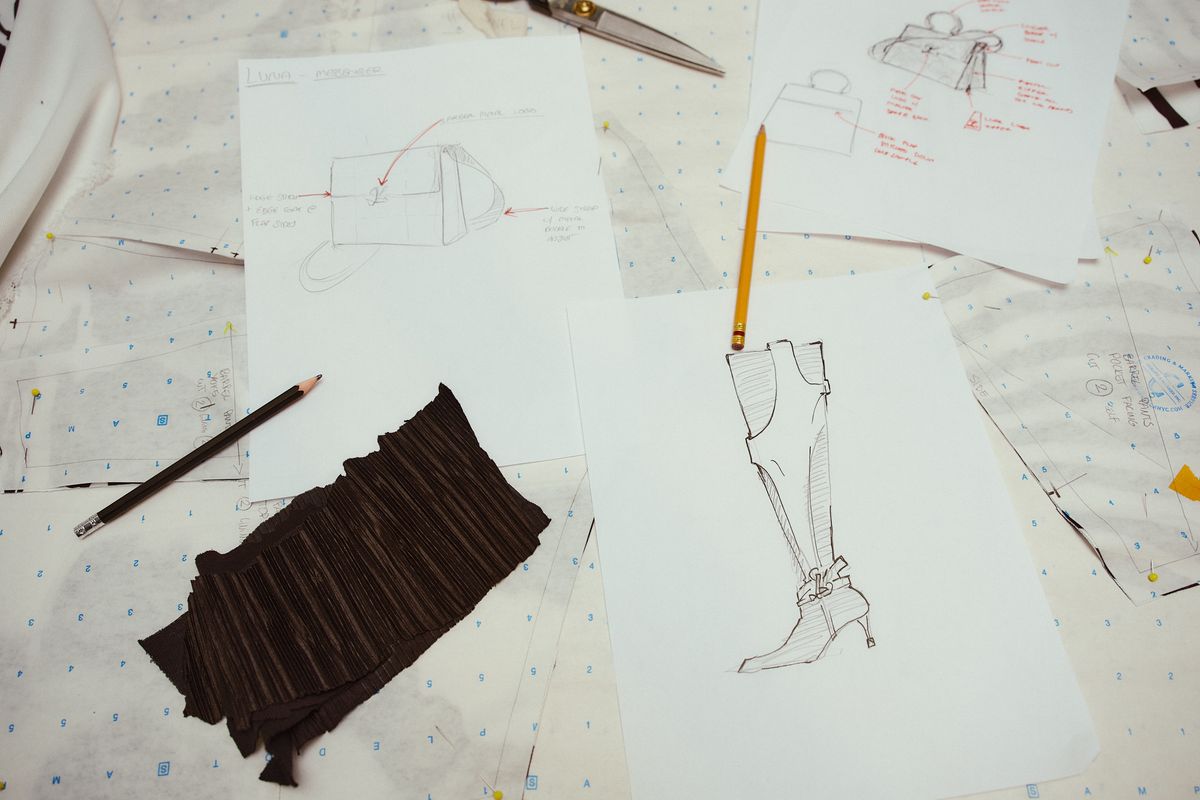
Andres Norwood
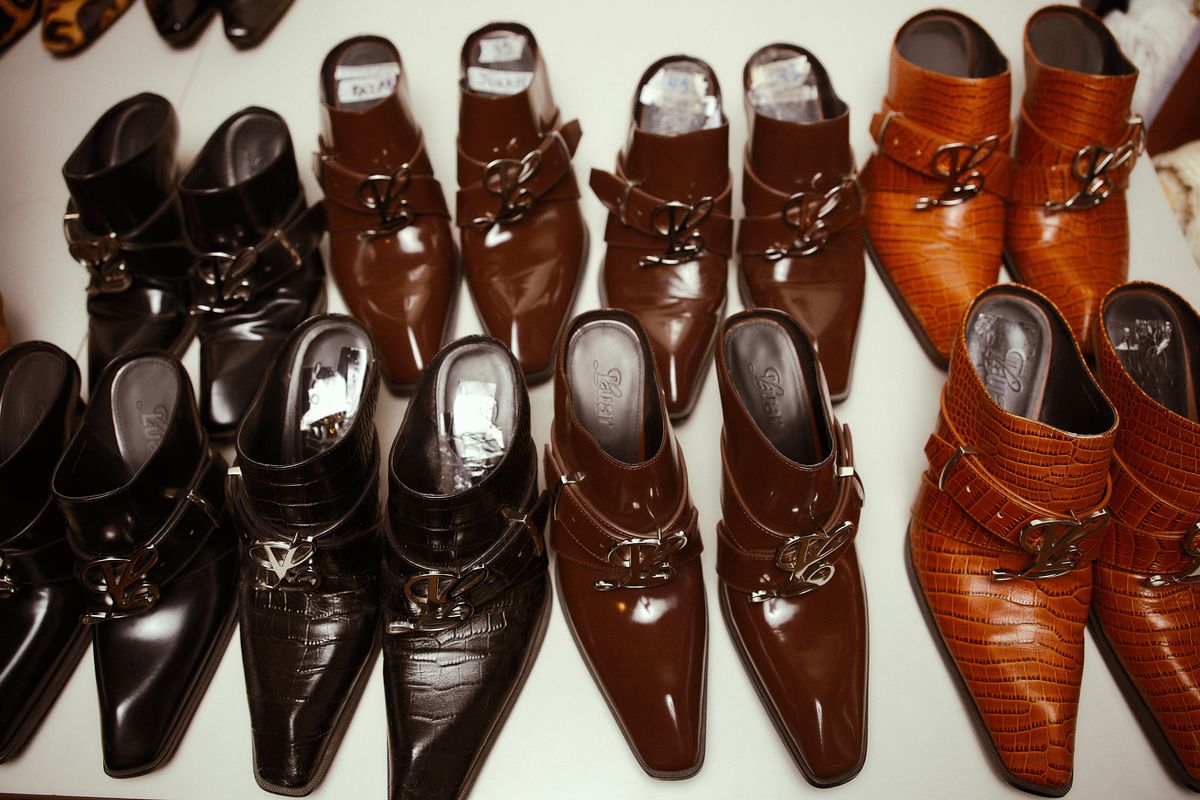
Andres Norwood
With celebrity fans like Beyoncé and Rihanna, a cult-loved bag that’s become a status symbol amongst the Downtown New York fashion set (Ana, named after his mother), and a CFDA award under his belt, Lopez has remained surprisingly low-key through Luar’s ascent to “It” brand. When I arrive at the studio for our interview, he’s sitting at a desk across from his PR director, Keyla, and two other members of his team, speaking to them in Spanish and casually holding a banana-yellow vape. “I sit right here with them. I don't have a separate table or office,” he says. “I always say this office is kind of a high school—[my team] hangs out with each other, they go to dinners, they go to parties.” No mean girls though? “Oh, we don’t do that,” he says.
The atmosphere at Luar HQ does feel lighthearted, even with the Met Gala only a few days away and Lopez surely dealing with the stress of both attending and dressing an A-list celebrity. There’s laughter, and silliness—at one point, we ask his team to jump into his photo, and they willingly oblige (“Oh, they’ve been waiting for this moment,” he says.) Later, he gets teased by one of them about his coffee order:“You want coffee and a smoothie?" He pauses. “The way I hate this office,” he sighs with an exasperated eye roll, and it’s clear he means the opposite.
Ahead, Lopez shares his creative process and hints at his future hopes for expanding Luar into a lifestyle brand.
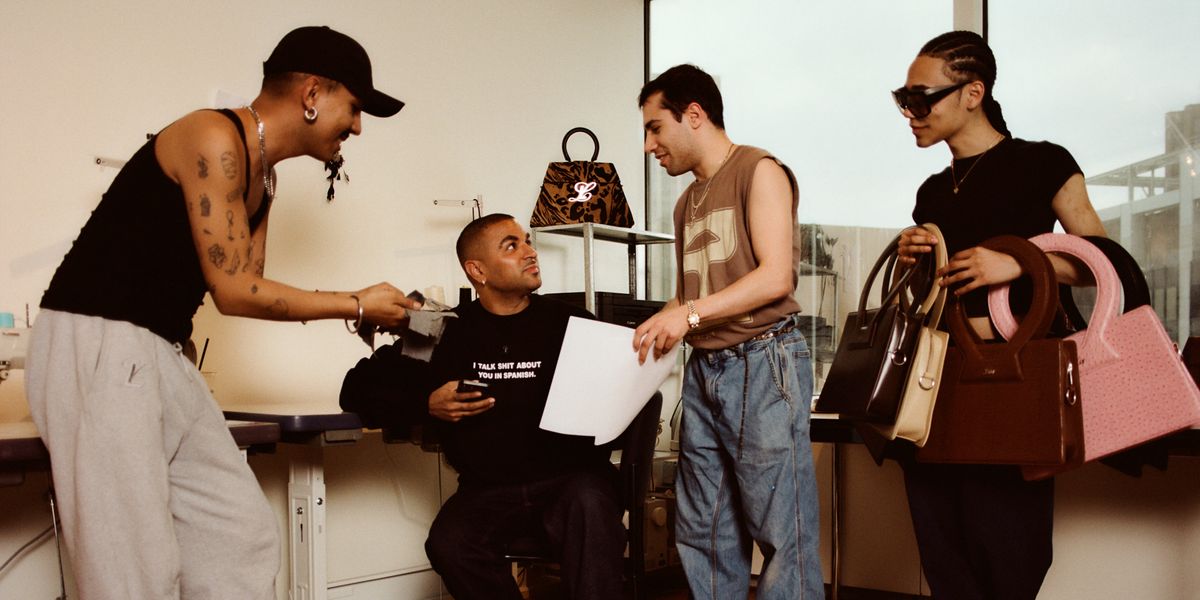
Andres Norwood
As a designer, where do you get your best creative ideas?
I think usually in the streets. I like to look at people. I ride the train, which people think is a lie, but I love it. I take it just because I like to see what people are wearing, why they're wearing it, and just build this world in my head.
Or going to the Dominican Republic and seeing people there. The colors, even though I don't do colors. I love to dissect people's perception of clothing and everyday wear.
Do you remember where you came up with the idea for your last show, El Pato?
Yes. 4:00 a.m. and I was in bed. I'm not even that girl to be like, god, I'm waking up and I'm feeling something. But when I do get the idea, that's how it does happen. I’m like, boom, this is it. And then I got up—I don't really write poems, but I wrote a poem.
The one in your show notes?
Yes. It just started coming to me and I started writing, I was crying, and I was like, okay, this is it.
Do you usually not sleep throughout the night, or was this a one-time occurrence?
When I'm home, everything starts rushing into my head, which usually happens around midnight. And then I'm up until two, three, four, five a.m. in the morning—and then I wake up at eight.
So you don’t sleep.
I don’t sleep.
 Andres Norwood
Andres NorwoodWhat’s it like to interview for a job at Luar HQ?
I mean, they first go through my team. Keyla is press, Jehan is more on the design side, and then Adrian—they’ll interview the [candidate] first, and then I interview them at the end.
What do you look for when you’re hiring?
I love a POC space. Or just people who feel energetic, good vibes, and are determined to work. And love fashion—not like, “I love fashion because I see it on Instagram.” You have to be very knowledgeable.
Do you quiz them?
I quiz them.
How would your team describe you?
Oh, I’m actually the loudmouth. I’m the class clown, the one who disturbs everyone.
What are some of the newest Luar launches you’re excited about?
Our backpacks, shoes, bandanas. We're launching these hats with glasses in them. And a new bag.
Do tell.
Yahaira. A messenger.
Who is Yahaira named after?
Well, Yahaira actually was my alter ego drag name, so I wanted to give her flowers. Yahaira is also a very typical Dominican girl name. She’s usually very chic. She’s fab, but she’s very spicy and sassy. She’s the girl who dates the drug dealer and makes him buy her expensive bags.
She won't care too much about where her dress came from, but her shoes and her bags have to be expensive. If she's crossing her leg, she wants you to see she has a red bottom on. [Laughs.] She does not want an Alaïa shoe—because you can’t tell.
The rich women in the DR, they also love this shape. And then a monogram, a logo, it’s very old world.
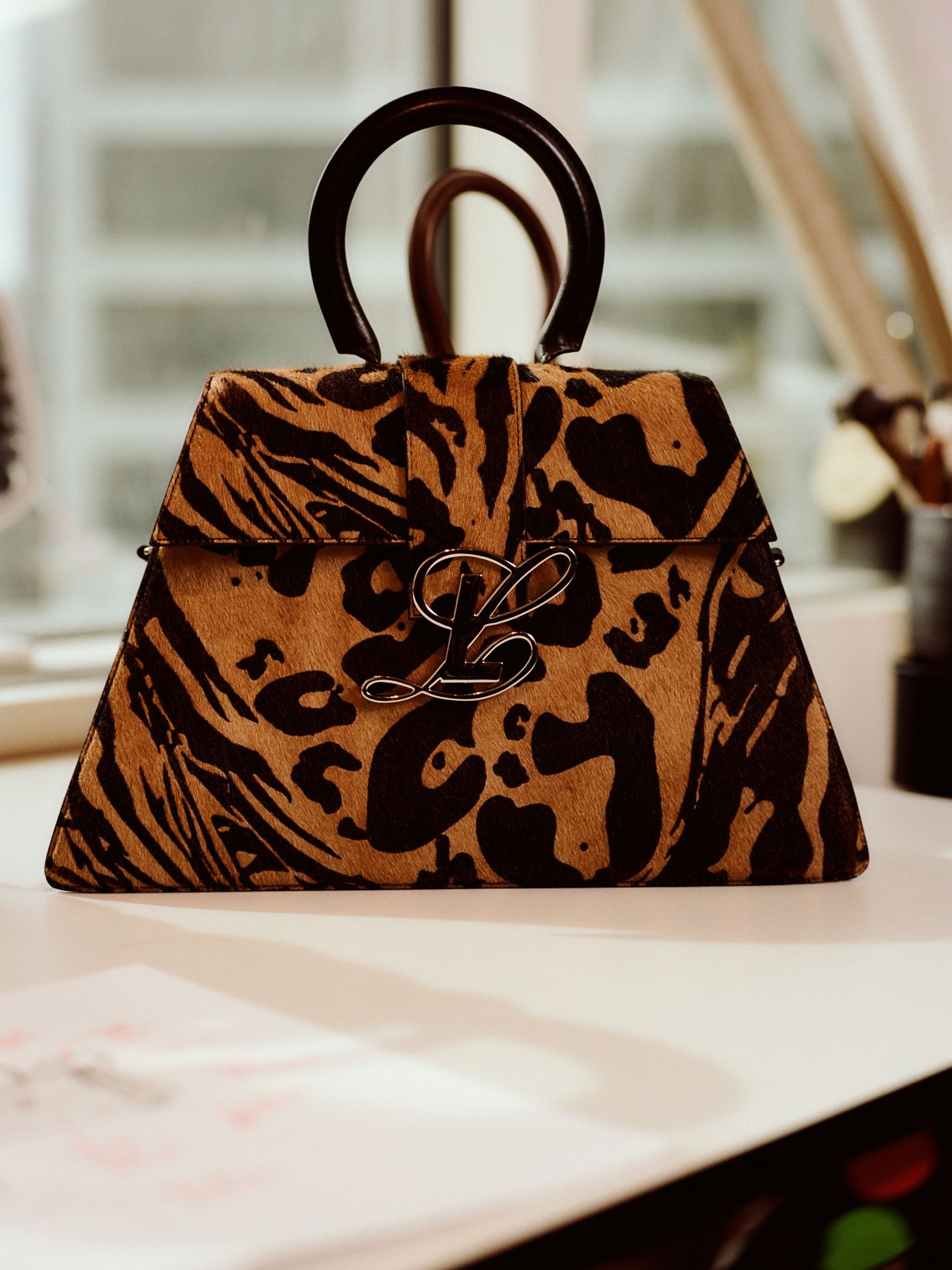
Andres Norwood
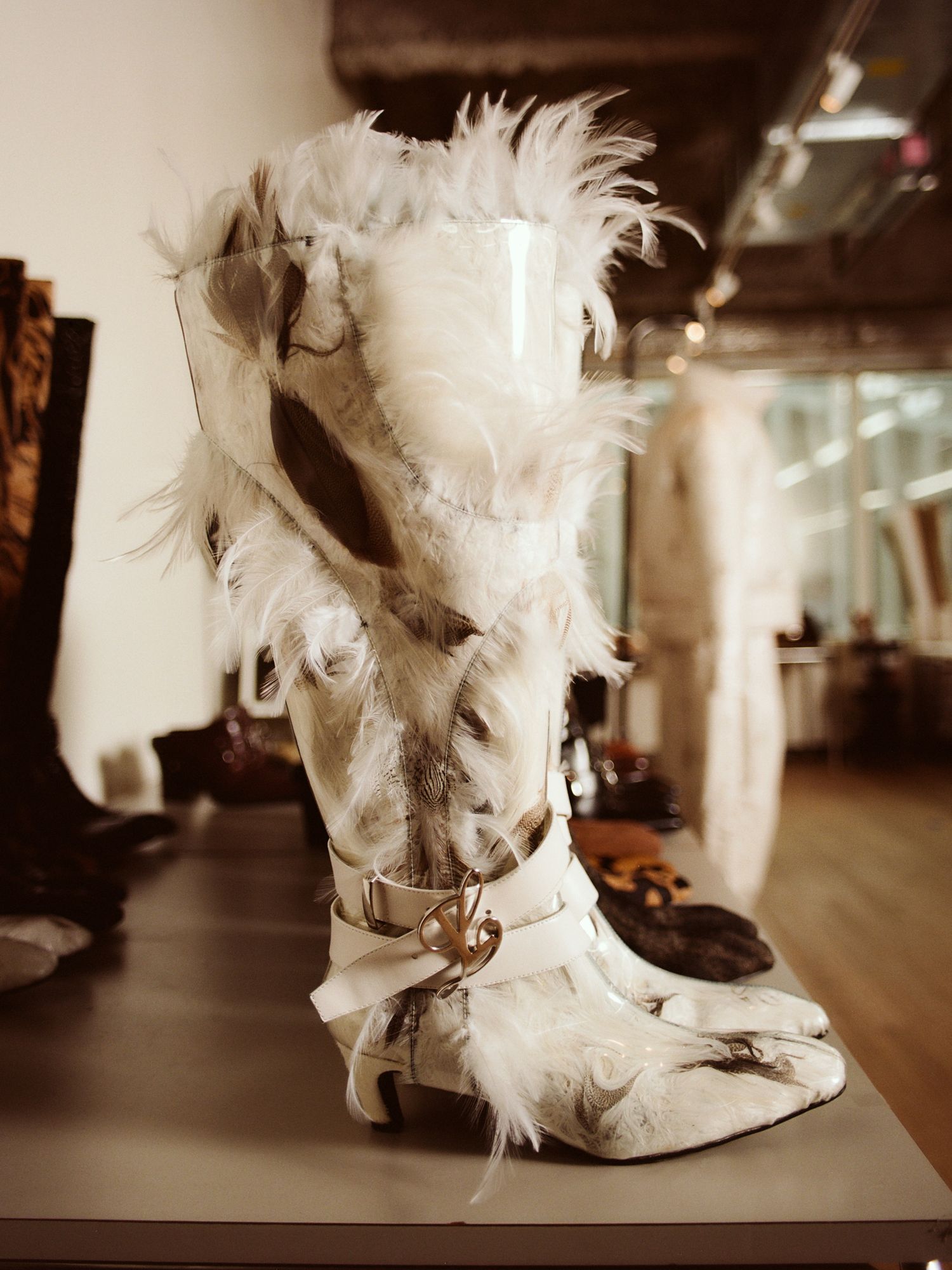
Andres Norwood
You’ve said before how Luar is “premium trash”—do you still feel that way?
Premium trash is just the perception of what people who come from a specific class see when they see you—their first thing is like, oh, they're probably trash. But then you actually have a premium palette and you actually have better taste than them. And they don't get it. And then they're the ones who are lost.
Did you see specific examples of this growing up?
My upbringing is just a photo memory of in my head of the things I would see, the people I was around—what they were wearing and the clothing choices they made when they really had no money, but they were trying to feel fab and look good, even in the crazy urban dystopia [of Williamsburg at the time]. Whether it's hand-me-downs or just going to the thrift store and buying these beautiful dresses and wanting to emulate the nouveau riche Latino “we made it” story, they were dressing up in an apartment in shitty Williamsburg, which I think is amazing. And I think that's very premium trash.
How did that affect your personal style?
I never fit in anywhere. I could be in Bushwick—I don't fit in with the girls. I could be in fashion—I don't fit in with the girls. Which is funny. It's a weird thing. Growing up, even now, I can be in these spaces and I don't really dress like everybody. It could be in a rave, or I could be at a dinner. I am going to have something on or carry myself a specific way that is not what's in my surroundings. So I always stand out in my own way.
It’s what makes Luar so unique—and it encourages people to want that for themselves, instead of pushing it away.
Thank you.
You’ve said before that your designs are pages in your journal and the only way you express yourself to the world. What do your journals say about you right now?
Stressed by the tariffs. I’m in my tariffs chapter.
What’s your biggest dream for Luar?
I really want to make this a lifestyle brand—furniture, homeware, just the everyday necessities that everyone loves. But a lot of it is going to be inspired by the Dominican Republic, my New York, and my travels. I’m actually collaborating right now on furniture.
Really!
Yes, a furniture company. That was one of my calls today.
We'll be waiting.
Photos: Andres Norwood

